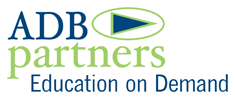Lifelong learning is an inherent part of the successful leader. Leaders who actively learn personally and promote learning as part of the organizational culture transform not only themselves but their companies as well. The CEO of PepsiCo, Indra Nooyi, recently spoke at the BlogHer Conference ’11. In a post about the keynote address, Leadership Principles That Guide Her, blogger Jessica Miller-Merrill summarized Nooyi’s five leadership principles: the Five C’s.
One “C” was competence. As Nooryi noted and Miller reported, lifelong learning allows the leader to stand out and stay ahead in one’s chosen field. In addition to remaining current, here are three other ways leaders can form the powerful partnership between leadership and learning:
1. Support internal training initiatives. Certainly approving the training budget is imperative but beyond that step, attend your company’s education programs and sessions. You may not be able to stay the entire time but your brief visit or even walk-through sends a powerful message: learning is important to you and therefore the organization. Can’t attend? Include training update on the next or every leadership team meeting agenda.
2. Encourage external professional development. Economic challenges may stretch your company’s travel and registration budget lines but are there ways to maintain active engagement with your field at large? Absolutely. Stretch the external conference option to every other year or select meetings closer to home. Include online courses and webinars in the budget. As part of the education registration approval process, ask the employee how s/he will use the training and require the staff member to report key findings to his/her team. [Caveat emptor: be sure training sources, especially digital, are solid, well-established content experts. There still are those hosted webinars with a large sponsor presenter presence. Unfortunately, the sessions turn into product promotion rather than training.]
3. Participate in relevant associations. Associations can be excellent sources for professional education. In particular, many non-profits established under section 501c3 of the IRS code — generally professional or individual member organizations — are devoted to education purposes. These groups have members from broad cross-sections of a field, industry or profession. Their education programs address best practices as well as hot topics. Establish in your organization’s policies or procedures options for employee participation (yes — including yourself) in such groups. Once again, leaders who support these opportunities clearly convey learning as a priority.
Leaders form a powerful partnership with learning by remaining competent and current; supporting internal training; encouraging external professional development; and participating in relevant associations. Learning must be a core value, especially in tough economic times, because it sustains individuals and organizations.
